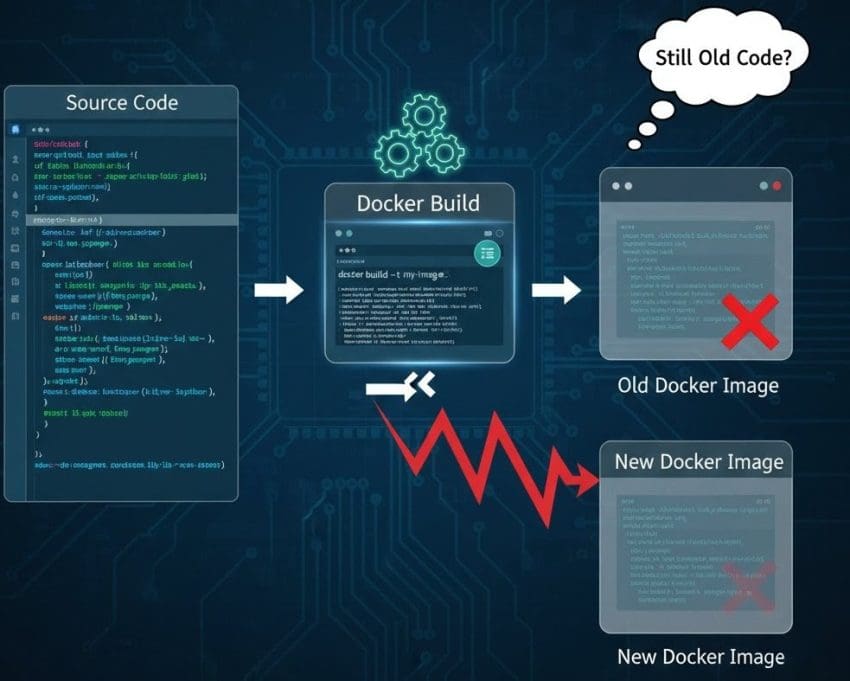One of the confusing situations while working with Docker occurs when a new image is built after code changes — yet those updates don’t appear in the container. This often leads to frustration between developers and DevOps engineers during testing or release cycles.
The Scenario 💡
Consider a case where a developer is working on a Java-based payment application. Initially, a Docker image was created (version V1) and shared with the QA team. After feedback, the developer modified the payments.java file inside the src folder and rebuilt the image using:
docker build -t v2 <path_to_dockerfile>
The new V2 image was shared again, but the QA team reported that the issue persisted — the behavior was exactly the same as V1. Despite the code change, nothing had changed in the container.
The Real Cause 🧩
This happens because of Docker layer caching.
Every instruction in a Dockerfile (like RUN, COPY, ADD, etc.) is stored as a separate layer, and Docker tries to reuse these layers to speed up builds.
👉 When a command like COPY . /app is used early in the Dockerfile, Docker checks whether the files have changed. If Docker doesn’t detect the change — even if the developer edited the source code — it might reuse the previous cached layer instead of rebuilding from scratch.
Though rare, this behavior can cause the container to appear as if no updates were made.
The Fix ⚙️
To rebuild the image from scratch and bypass caching, use the --no-cache option during the build:
docker build --no-cache -t v2 <path_to_dockerfile>
This ensures that Docker doesn’t reuse any previous layers and that every instruction in the Dockerfile executes freshly.
Best Practices ✅
- Use
.dockerignoreto exclude unnecessary files and ensure only relevant code changes trigger a rebuild. - Keep the
COPYorADDinstruction toward the end of the Dockerfile so that caching benefits other setup layers (like installing dependencies) without skipping new code. - Always verify the final image by running the container and checking application behavior before handing it over to QA.
Quick Recap 🧠
→ Problem: Code changes not reflected due to Docker’s layer caching.
→ Fix: Use docker build --no-cache ... to force a fresh build.
→ Tip: Arrange Dockerfile layers wisely and use .dockerignore effectively.
Final Thought 🎯
Docker caching is designed to optimize build performance, not cause confusion. Understanding how caching works helps ensure every build accurately reflects code changes, keeping development, testing, and deployment workflows smooth and predictable.
To dive deeper… Check out these related topics:

